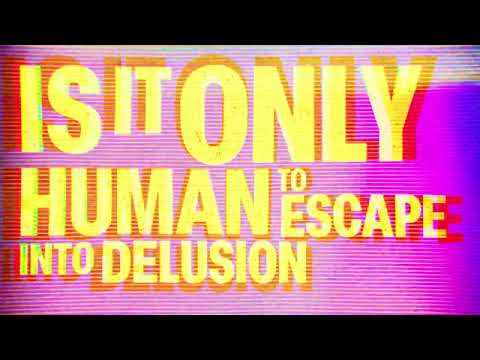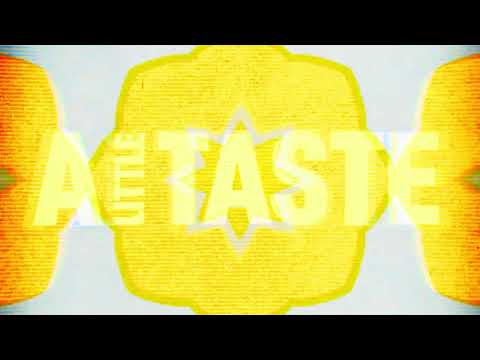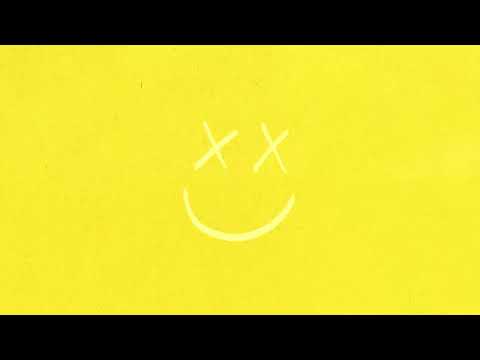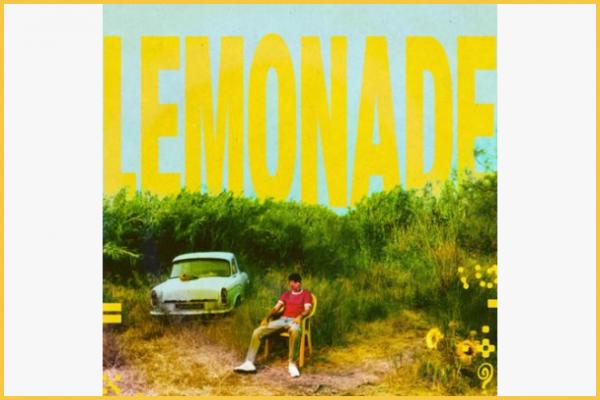Lyrics
LemonadeLemonade
She got me wasted
The way she's making me lie
Hung from her bracelet
Her lucky charm if I like
Symptoms of coming to life
No point in thinking it twice
She got me wasted
The way I'm chasing the night
I don't wanna go home
Am I losing control?
I don't wanna go home
I don't wanna go home
She's so bitter
She's so sweet
Lemonade
Lemonade
A little taste
Is all I need
Lemonade
Lemonade
She got me waking
At times that I've never seen
Bright yellow spaceship
Might make me start to believe
Symptoms are stuck on repeat
No point in trying to leave
She got me waking
It's doing something to me
I don't wanna go home
She's so bitter
She's so sweet
Lemonade
Lemonade
A little taste
Is all I need
Lemonade
Lemonade
Is it only human
To escape into delusion?
And if I should try to prove it
Would I win or would I lose it?
She's so bitter
She's so sweet
Lemonade
Lemonade
A little taste
Is all I need
Lemonade
Lemonade
Song Overview

Review and Highlights

I hit play and the first thing that snaps into focus is the palette - clipped funk guitar, bright keys, a rhythm section that keeps the air moving without elbowing the vocal. He’s not chasing maximalism. He’s trimming fat so the hook can do its work. When the chorus lands, the sweet-bitter tag sticks because the production mirrors it: fizzy top end against a more grounded low mid, sugar cut with pith.
Creation History
“Lemonade” ushers in his third era, co-written with Theo Hutchcraft, David Sneddon and Nico Rebscher, and produced by Rebscher. The single dropped September 30, 2025 as the lead taste of the album How Did I Get Here? The rollout leaned into a cheeky campaign - posters, a microsite and even a lemonade pop-up - which fits the record’s lighter, psych-pop-leaning brief. On the record side, the official credits list a tight crew: drums by Jamie Houghton, guitars by Michael Blackwell, bass by Alexander Grube, with mix work under the Dan Grech-Marguerat umbrella and assistants Luke Burgoyne and Seb Maletka-Catala.
Song Meaning and Annotations

Plot
There’s no narrative in the cinema sense - it’s an interior snapshot. A night that shouldn’t end, a pull he can’t regulate, and a muse who flips between comfort and sting. Verse one sketches the loss of control with talismanic images - bracelets, lucky charms - and verse two tilts dreamy, where time blurs and a “bright yellow spaceship” feels almost plausible at 3 a.m.
Song Meaning
He’s writing about surrender, but not the sad kind. It’s a studied submission to the rush - the thrill of letting go of neat lines and leaning into a feeling that won’t be managed. “Bitter” and “sweet” aren’t moral judgments here; they’re flavor notes in the same glass. The message threads through the production too: shiny surfaces with a human pulse, pop instincts colored by indie textures. Mood check - heady, hazed, and a little neon around the edges.
Annotations
A recurring motif in Louis' music is the theme of an uneven power dynamic in a romantic context. He is intensely devoted to his partner, but feels that he has lost control over himself and the situation.
That tension is the motor. He keeps choosing the high despite knowing he’s not holding the wheel. It turns the refrain into a compact thesis - pleasure as risk.
This verse plays with contradiction and sensory imagery. “She’s so bitter, she’s so sweet” sets up the girl as a paradox... The repeated hook “Lemonade, lemonade” turns that paradox into taste.
The hook works because taste is instant. You don’t have to explain tart plus sugar - your mouth knows. Pop loves metaphors you can feel.
“She got me waking at times that I’ve never seen” ... It’s the sense of time bending around intense connection. “Bright yellow spaceship” feels childlike, hopeful... being with her makes him open to impossible things.
That image tips the song into soft-psychedelia. Not trippy for shock value - more like a daydream painted in primary colors.
“Symptoms are stuck on repeat, no point in tryin’ to leave.”
He medicalizes the crush. Calling feelings “symptoms” sells the cycle - spike, crash, repeat - and excuses a bit of delicious irresponsibility.
Louis references a similar feeling in his song “Silver Tongues”...
Right - that refusal to go home is a repeat character trait. He’s loyal to the moment, for better or fizzier.
Perhaps, it’s a reference to “Orange Sunshine”... a batch of LSD tablets... the taste varies greatly depending on the form.
Fun rabbit hole, though here the lyric reads cleaner as palate and paradox. Still, the track’s woozy sheen leaves the door cracked for psychedelic winks.

Style, Rhythm, Production
Call it pop with indie-friendly edges - tight pocket drums, rubbery bass, clipped guitar, bright keys. The groove sits mid-tempo; syncopation keeps the lines buoyant. Vocals stay close and present, double-tracked for shimmer on the hook. You can hear the team favor organic percussion over heavy programming, which lets the chorus breathe.
Emotional Arc
It starts alert and a little sly, grows bolder as he gives in, then resolves not with wisdom but with appetite. That’s the point - the high is the lesson.
References and Touchpoints
There are fingerprints from prior work - the “don’t go home yet” energy from “Silver Tongues” - but filtered through a sunnier lens. The promo world around it - the vending machine, the lemon iconography - doubles the song’s sense of play.
Key Facts
- Artist: Louis Tomlinson
- Featured collaborators: Nico Rebscher - producer; Theo Hutchcraft & David Sneddon - co-writers
- Composers/Writers: Louis Tomlinson, Theo Hutchcraft, David Sneddon, Nico Rebscher
- Release Date: September 30, 2025
- Single / Album: Standalone single leading into How Did I Get Here? (album due January 23, 2026)
- Label: 78 Productions under exclusive license to BMG UK
- Genre: Pop with psych-pop tint; funk-leaning guitar and bright keys
- Instruments: Drums, electric bass, electric guitars, keyboards/synths, percussion, layered backing vocals
- Length: 2:39
- Language: English
- Music style: Hook-first, mid-tempo groove, clean topline phrasing
- Mood: Sweet-and-sharp, nocturnal, addictive
- Notable personnel: Drums - Jamie Houghton; Guitars - Michael Blackwell; Bass - Alexander Grube; Mixing - Dan Grech-Marguerat; Mix assistants - Luke Burgoyne, Seb Maletka-Catala; Engineers - Nicolas Rebscher, George Chung
Questions and Answers
- What’s the sonic shift here compared to his last cycle?
- He leans brighter - psych-pop colors, funk-sketched guitars, and less grit than the darker cuts on his previous run.
- Who wrote and produced the track?
- Louis Tomlinson co-wrote it with Theo Hutchcraft, David Sneddon and Nico Rebscher; Rebscher produced.
- How was the single promoted on day one?
- With a “Louis’ Lemonade” website, a vending-machine concept and a Times Square pop-up handing out lemon-branded treats.
- Where does this slot in the upcoming album story?
- It’s the lead-off for How Did I Get Here?, signaling a more confident, sunnier direction.
- Any hard chart stats yet?
- It’s just out. Early playlisting is strong; official weekly peaks will follow once the first tracking week closes.
How to Sing Lemonade
- Phrasing: Keep verses conversational and a touch behind the beat. Let the consonants click - the groove does the lifting.
- Range & placement: Sits in a comfortable tenor pocket with hook notes that want a forward, focused vowel. Avoid spreading on the long “-nade.”
- Breath map: Inhale before “I don’t wanna go home” and treat the repeat as a single arc. Save the biggest breath for the first chorus entry.
- Tone color: Slight grit is fine but keep the top clean. Double a light head-voice layer on the chorus if you’re stacking parts.
- Feel: Think late-night euphoria. Smile into the tone on “bitter/sweet” so the contrast reads without pushing volume.
Additional Info
Rollout extras worth noting: a dedicated microsite where saving the single unlocks a playful “vending machine,” and a one-day Times Square activation that handed out lemon-themed drinks and merch to match the single’s palette. Smart branding, minimal fuss - and it kept the conversation on the song.
